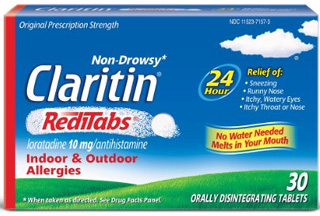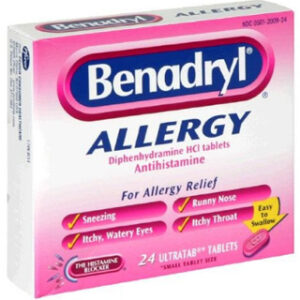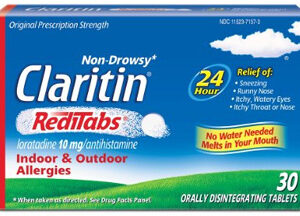Overview of Claritin
Claritin, with the generic name loratadine, is an antihistamine medication used to treat allergy symptoms such as sneezing, rhinitis (runny nose), itchy and watery eyes, and itching of the nose or throat. It is also used to treat itching and swelling caused by chronic urticaria (hives). Claritin does not prevent hives or prevent/treat a serious allergic reaction (anaphylaxis).
Pharmacological Properties
Loratadine is a long-acting, non-sedating antihistamine that inhibits peripheral histamine H1 receptors. It has a rapid onset of action, usually within 1 to 3 hours, and its effects can last for a full 24 hours. Being a second-generation antihistamine, Claritin is less likely to cause drowsiness compared to first-generation antihistamines.
Indications and Usage
Claritin is indicated for the relief of symptoms associated with allergic rhinitis (seasonal and perennial) in adults and children. It is also indicated for the treatment of patients with chronic idiopathic urticaria to alleviate pruritus and reduce the size and number of hives. Symptom relief usually occurs within 1 to 3 hours after taking the medication.
Dosage Forms and Strengths
Claritin is available in several dosage forms including tablets, chewable tablets, and syrup. The strengths vary from 5 mg to 10 mg of loratadine per dose. Specifically, the standard adult dose is 10 mg once daily. Chewable tablets and syrup formulations are available for children with dosages adjusted for their age and weight.
Dosing Information
For adults and children over 6 years old, the usual dose of Claritin 10 mg once daily. In children 2 to 5 years old, dosage may be in the form of syrup or chewable tablets, typically at a dose of 5 mg once daily. Children younger than 2 years of age should use the medication only under the guidance of a healthcare provider.
Administration Guidelines
Claritin can be taken with or without food. When using the syrup, the bottle should be shaken well before each use, and an appropriate measuring device should be used to ensure the correct dose is administered. Chewable tablets must be chewed completely before swallowing. Tablets should be swallowed whole with a full glass of water.
Drug Interactions
Although loratadine is known for having fewer interactions than some other antihistamines, caution should still be exercised when using it concurrently with other medications. In particular, inhibitors of the liver enzyme CYP3A4 or CYP2D6 (such as ketoconazole, erythromycin, or cimetidine) may increase the plasma concentration of loratadine, which could potentially lead to an increase in adverse effects.
Adverse Reactions
Common adverse reactions to Claritin include headache, somnolence (although less common than with first-generation antihistamines), fatigue, and dry mouth. Nervousness and insomnia have been reported, especially in children. Rare side effects may also include allergic reactions, liver disorders, increased heart rate, and hair loss.
Contraindications
Claritin is contraindicated in patients with known hypersensitivity to loratadine or any of its inactive ingredients. It should be used with caution in patients with severe liver disorders as this could affect drug metabolism, leading to higher levels of loratadine in the blood.
Use in Specific Populations
Claritin should be used with caution in pregnant and nursing women only if the potential benefit justifies the potential risk to the fetus or infant. The safety and effectiveness in pediatric patients under the age of 2 years have not been established. For older patients or those with renal/liver impairment, the dose of Claritin may need to be adjusted based on the specific situation.
Storage and Handling
Claritin should be stored at room temperature, between 20 to 25°C (68 to 77°F). The medicine should be kept in its original packaging until it is time to take it to protect it from moisture and light. All medications should be kept out of the reach of children and pets.
Overdosage Information
In the event of an overdose, treatment is symptomatic and supportive. Patients may experience drowsiness, tachycardia, and headache after an overdose. No specific antidote for loratadine overdose is known, and hemodialysis does not effectively remove loratadine from the blood.
Patient Counseling Information
Patients taking Claritin should be advised not to take more than the recommended dose. They should be informed that taking Claritin may affect their ability to perform activities requiring mental alertness or physical coordination, such as driving a vehicle or operating machinery, even though it is less likely to cause drowsiness. Patients should report any severe side effects to their healthcare provider.






Reviews
There are no reviews yet.